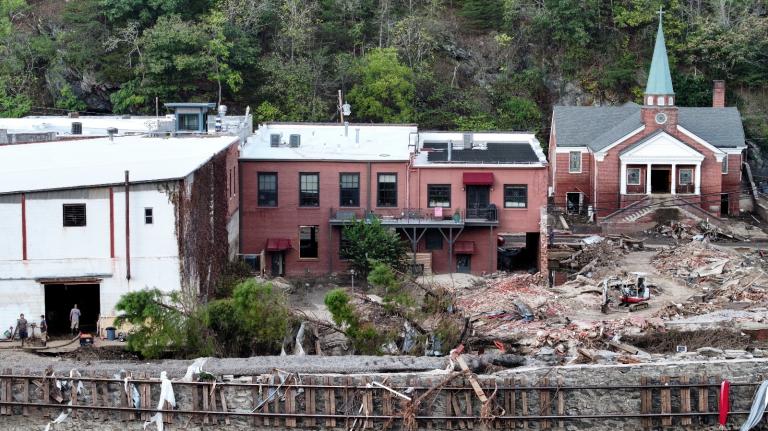 The second half could be enough to make you cry.Sens. John Kerry, Lindsey Graham, and Joe Lieberman (KGL) are supposedly going to unleash their long-awaited tripartisan climate/energy bill soon. Based on the (extremely tentative) information that’s gotten out so far, it looks like it will implement some sort of cap-and-trade system for electric utilities, levy a carbon tax on transportation, return some level of dividends to consumers, and delay any cap on industrial facilities for an as-yet undetermined period of time.
The second half could be enough to make you cry.Sens. John Kerry, Lindsey Graham, and Joe Lieberman (KGL) are supposedly going to unleash their long-awaited tripartisan climate/energy bill soon. Based on the (extremely tentative) information that’s gotten out so far, it looks like it will implement some sort of cap-and-trade system for electric utilities, levy a carbon tax on transportation, return some level of dividends to consumers, and delay any cap on industrial facilities for an as-yet undetermined period of time.
That’s the carbon-pricing piece, anyway, which has been the subject of most political dispute. Said Kerry, “What’s the mechanism for pricing carbon is the real key here. That’s what we’re trying to figure out, is how we do that in the most effective way.” By “most effective” of course he means able to garner 60 votes, which is no mean feat given that the only road-tested, economically credible, bipartisan carbon-pricing policy — economy-wide cap-and-trade — has been poisoned in the Senate.
For a moment, though, let’s peel our eyes from the shiny carbon-pricing bauble. Carbon pricing is only one aspect of climate policy, and not necessarily the most important. Recall that carbon pricing was only about a third of the American Clean Energy and Security Act that passed the House. Substantial parts of that bill were devoted to directly supporting clean energy and boosting energy efficiency. In many ways they were the best parts of the bill.
Thanks to the energy-efficiency provisions, consumer spending on utility bills would go down by 7 percent by 2020. That’s right: on average, Americans would pay less for electricity, not more. The cap-and-trade program would reduce emissions 15 percent below 2005 levels by 2020, but, according to a study (PDF) by the World Resources Institute, when all complementary policies are taken into account, that target more than doubles, to 33 percent. That’s 18 percent more — even without the cap, enough to meet Obama’s Copenhagen target of 17 percent by 2020. [UPDATE: Ah, crap. The preceding paragraph makes a dumb mistake I’ve made (and corrected!) before. It’s not the efficiency and RPS provisions in ACES that will produce the additional reductions; they produce no reductions above and beyond the CO2 cap, as our own Ken Johnson is fond of pointing out. The complementary policies that produce additional reductions are the command-and-control caps on other GHGs, like methane. More on this tomorrow.]
So it’s worth asking what “complementary policies” will be in the KGL bill. Remarkably little has been said on that subject. The default assumption, as far as I can tell, is that the complement will be the American Clean Energy Leadership Act, which Sen. Jeff Bingaman’s Energy & Natural Resources Committee passed last year. The senators who have made reference to an “energy-only” bill, which they argue would be easier to pass than a comprehensive bill, are generally referring to ACELA.
So, what’s with ACELA? Does it stand up to the complementary policies in ACES?
No. It’s important to state this bluntly: ACELA sucks. As a standalone bill, it does virtually nothing for renewables, boosts efficiency a middling amount, and dumps a bonanza of subsidies on offshore drilling, nuclear power, tar sands, oil shale, and natural gas. It also weakens the Renewable Fuel Standard. It’s a minor deviation from the awful energy status quo and would be a depressing end indeed to the year-long Obama-era effort to finally address America’s energy problems.
According to the nonpartisan Congressional Budget Office (PDF), ACELA would increase the deficit by $13.5 billion by 2020. According to the Union of Concerned Scientists (PDF), the renewable energy standard in ACELA would require less clean energy than is expected under business as usual. According to the American Council for an Energy-Efficient Economy (PDF), the efficiency provisions in ACELA would save half as much energy by 2020, and a third as much by 2030, as ACES. In exchange for these wan gestures at clean energy, it dumps billions on dirty energy incumbents.
If KGL’s carbon pricing is as weak as it sounds, and it’s coupled with ACELA, the result will be nothing short of dismal. If the carbon pricing portion falls out and we’re left with “energy-only” ACELA, the result will be even more dismal.
Is there a way to avoid this train wreck? Some kind of third option that can vouchsafe the 2020 targets Obama pledged in Copenhagen while effectively postponing the “comprehensive bill” question for a time when the political climate is more fortuitous (say, right after Harry Reid reforms the filibuster)? I’ll look into that tomorrow.



